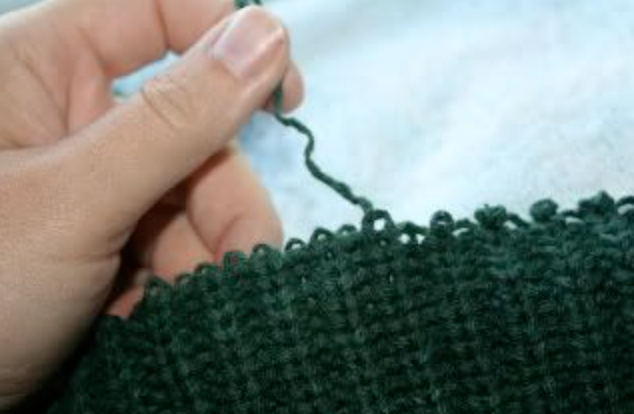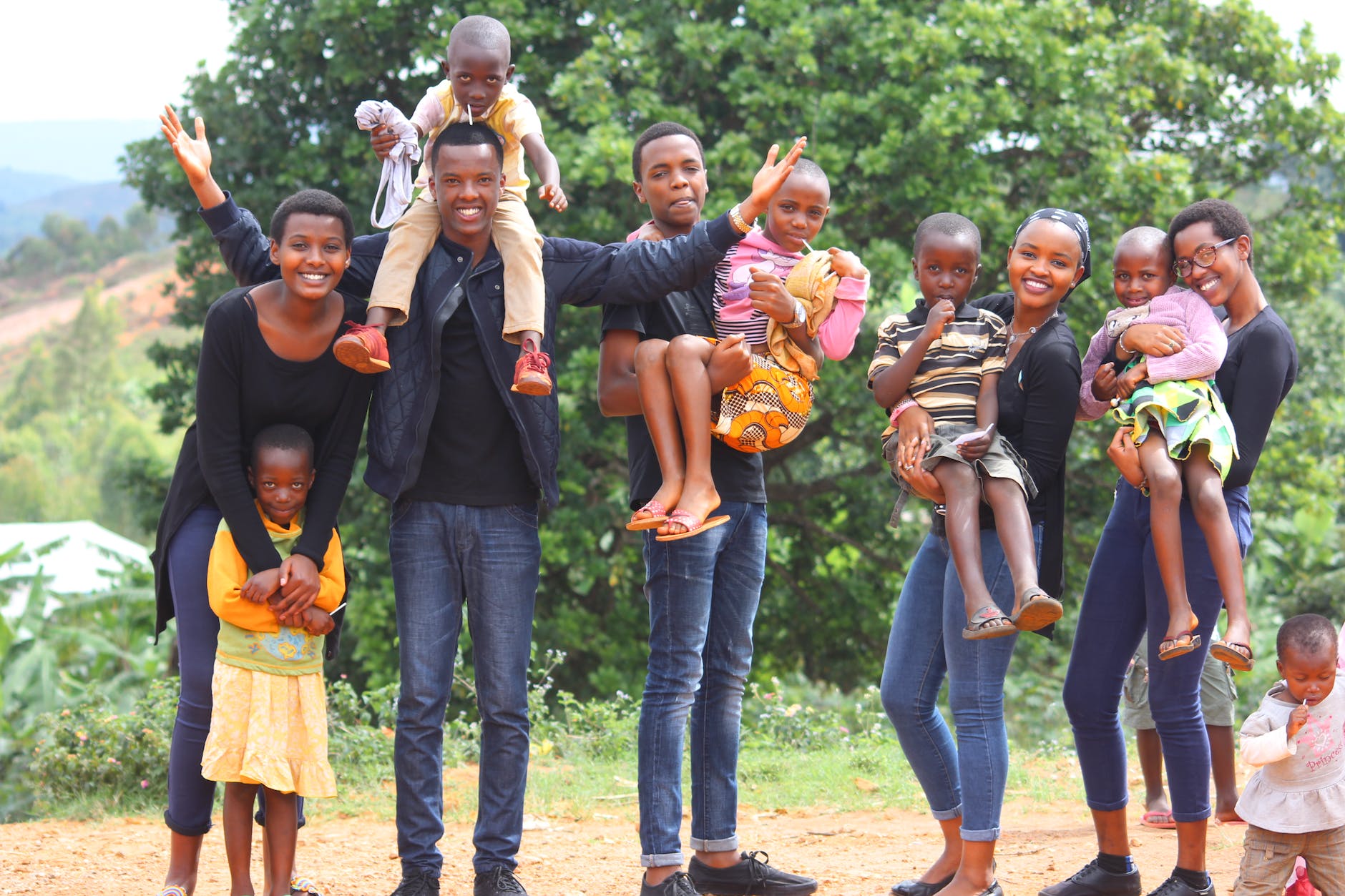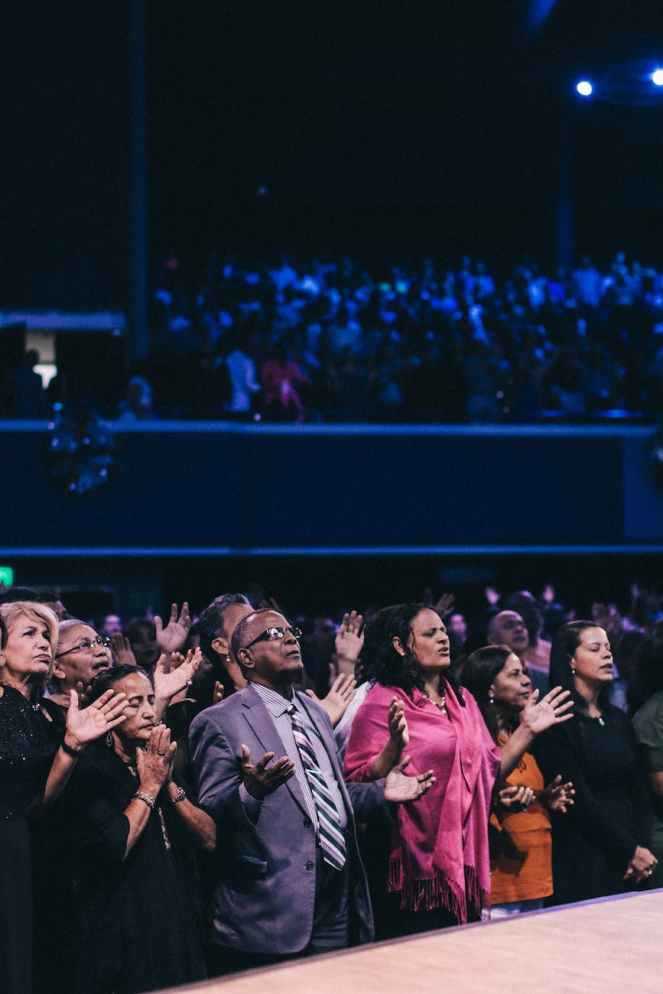For the last several months I have been talking about my experience growing up in the Independent Fundamentalists Baptist (IFB) Movement. Since leaving the IFB, I have challenged myself to learn, grow, and change. I have learned so much about myself and the world around me. I still have a long way to go, but I value the progress I’ve made. I don’t plan to continuously write about this topic forever; I plan to move on to writing about other subjects soon. I have a few more IFB related topics I would like to discuss before I move on. I’ve pushed off these last few topics because they are more sensitive and have taken me a bit longer to think through and write about.
Today, I want to delve into the topic of family enmeshment, specifically within the context of fundamentalism and high control religious communities. I’ll be coming at this topic from the perspective of how I perceived this phenomenon manifested itself within the IFB, a high-control religious community. This phenomenon takes on a unique character in environments where strong beliefs and organized practices heavily influence the dynamics within a family. My aim is to shed light on how family enmeshment unfolds in these religious contexts, influencing individual autonomy, emotional well-being, and the broader dynamics within families. Recognizing these subtleties is pivotal for creating awareness and initiating conversations about cultivating healthier family dynamics within the framework of fundamentalist and high-control religious communities. (See references and resources below for more information)
Before we delve into the discussion on family enmeshment and its connection to the IFB, it’s essential to clarify that my intention is not to assign blame or critique specific families. Rather, the focus is on exploring how high-control religious groups, such as the IFB, and high-control religious communities, may inadvertently encourage and foster enmeshment within their unique frameworks. The aim is to shed light on broader patterns and dynamics rather than making individual judgments. I’m approaching this topic recognizing the complexity of familial relationships within the context of such religious communities.
Being a part of a loving family is truly amazing. What I love the most about my family is the warmth of our welcoming home, the comfort of knowing I’m never alone, and the assurance that I have a place where I’m accepted for who I am. I enjoy the sense of belonging, shared laughter, and knowing that I have support for difficulties and someone to share my success with. It’s a reminder that in a world of constant change, I have a place of love and acceptance, and that is priceless.
But, what happens if the family experience becomes overwhelming and suffocating?!
Family enmeshment, a complex issue, described as a dysfunctional family dynamic where boundaries among family members are either blurred or nonexistent. This condition can lead to excessive involvement in each other’s lives, resulting in challenges such as diminished personal autonomy, emotional entanglement, and difficulties in forming healthy external relationships.
Think of it like this: enmeshment within a family is like a tightly knit sweater, where each thread is so closely intertwined that it’s hard to distinguish one from the other. The boundaries between family members blur, much like the threads in the fabric, making it challenging for each individual to maintain a clear sense of personal space and identity. This close weaving can restrict freedom and autonomy, creating difficulties in establishing healthy relationships beyond the familial knit.
If there’s a pull in the sweater of the familial knit, it represents a tension or imbalance within the intricate fabric of relationships. Just as a pulled thread disrupts the smooth continuity of a sweater, tensions in an enmeshed family can strain the cohesion and harmony. This pull might signify a conflict, a desire for individual space, or a struggle for autonomy within the tightly woven connections. Addressing the pull requires delicacy and care, much like repairing a snag in a knit sweater, as it involves understanding and re-establishing healthy boundaries to maintain the overall integrity of the familial fabric.
Enmeshed families find it hard to establish a clear sense of personal identity and independence, as their lives are deeply intertwined. Emotional boundaries become hazy, making it difficult to differentiate one’s emotions from those of other family members. Consequently, individuals may feel responsible for one another’s feelings, which can be emotionally burdensome. Enmeshment can hinder the development of healthy relationships beyond the family unit, as individuals may carry these patterns into other aspects of their lives. These ingrained enmeshment patterns can extend their influence, affecting various facets of individuals’ lives. Carrying the dynamics of blurred boundaries and over-involvement, individuals may find it challenging to establish and maintain healthy relationships in other areas, such as friendships, romantic partnerships, or professional settings. The difficulty lies in navigating personal space, emotional autonomy, and clear communication, which are important components of balanced and thriving connections.
Within the context of fundamentalism and high control religious communities and more specifically in my case the IFB community, family enmeshment can be a prevalent and concerning issue. In this tightly-knit religious environment, where conformity and adherence to strict doctrines are highly valued, families often find themselves deeply interconnected.
The IFB community often views itself as more than just a religious organization; it sees itself as the “family of God.” In this perspective, the bonds that unite its members go beyond faith; they create a sense of unity, community, and belonging. This familial connection is nurtured through shared beliefs, worship, and a strong support system. The IFB’s “family of God” approach emphasizes the idea that God is the father and members are not just fellow congregants but brothers and sisters in faith. This can create a tight-knit community that supports one another through life’s challenges and celebrates together in times of joy. As a result, families struggling with enmeshment may see the IFB as a natural extension of their existing dynamics, making it effortless to fall into this enmeshed pattern.
But, what happens if this family of God experience becomes overwhelming and suffocating?!
The IFB’s emphasis on community and shared beliefs can contribute to emotional enmeshment within the community. The pressure to conform to a specific religious doctrine can create a shared identity that is deeply ingrained in every family member. As a result, personal autonomy may be stifled, making it challenging for individual members to explore their own beliefs or make choices that deviate from the family’s religious norms.
Members within the IFB community are often expected to prioritize their faith and church involvement above all else. This can lead to a lack of boundaries when it comes to members’ participation in each other’s religious, social, and personal lives. For example, individuals may find their personal decisions, such as matters of faith or lifestyle choices, subject to scrutiny or influence from fellow community members. This lack of delineation between personal and communal spheres can contribute to an environment where individual autonomy is compromised, and the collective expectations of the religious community play a substantial role in shaping members’ choices and actions. Another example is when IFB parents of grown children exert considerable influence over their children’s personal and spiritual decisions, and children feel obligated to adhere to their parents’ religious beliefs even if they have doubts or differing beliefs.
A family entrenched in enmeshment often faces deep connections, where personal boundaries blur, emphasizing shared choices and feelings. This dynamic extends into their religious community, where participation in the ‘family of God’ complicates the distinction between personal and collective influence. This enmeshment makes the family receptive to the IFB’s guidance, support, and a sense of belonging. Yet, challenges arise as the lines between personal freedom and collective decision-making blur.
The IFB community, valuing a unified approach to faith, can naturally become privy to the personal choices of its members. This interconnectedness can lead the community to offer advice or have a say in various aspects of a family’s life, whether it’s about parenting, career paths, or even personal decisions and beliefs.
The close ties within IFB families can also impact individuals’ ability to form healthy relationships outside the church community. The fear of being othered, ostracized, or judged by the church community can deter individuals from seeking connections with those who have different beliefs or lifestyles. This fear can lead to isolation and difficulty in developing a diverse and supportive social network.
Within the IFB context, acknowledging and addressing family enmeshment presents a unique challenge, as their community places a significant emphasis on conformity and the shared beliefs that bind its members together. This emphasis has inadvertently contributed to the complexities of family enmeshment within their community.
The relationships within the IFB community can often bear a striking resemblance to family enmeshment. In this tightly-knit and often insular environment, people may find themselves entangled in a web of connections that can blur the boundaries between personal and group identity. Much like family enmeshment, these dynamics can have both positive and negative consequences.
On the positive side, the sense of belonging and camaraderie in the IFB can provide a strong support system for its members. It often feels like an extended family, with shared beliefs, values, and traditions creating a deep bond among the congregation. This can be a source of comfort and a feeling of belonging, especially for those who may not have strong family ties outside the church.
However, the downside to this closeness is that it can sometimes lead to family enmeshment-like dynamics, where individuality and personal boundaries become blurred. In the IFB, dissenting opinions or questioning the established beliefs are often discouraged or even condemned. This can create an environment where conformity is prized, and those who deviate risk ostracism . In such cases, the sense of belonging can turn into a suffocating pressure to conform, with members feeling unable to express their own beliefs or make decisions independent of the group’s expectations.
Just as family enmeshment can stifle personal growth and independence within a family unit, similar patterns can emerge within the IFB, where the group’s cohesion and conformity can sometimes come at the expense of personal development. This complex interplay between community and individuality is a fundamental aspect of the IFB experience and one that often requires careful navigation for those seeking a balance between their faith and their individuality.
When a person makes the hard decision to distance themselves from the tightly knit community, they encounter a complex set of challenges. Among these challenges, one prominent issue is the sense of social isolation. Leaving the IFB often entails losing contact with family and friends who remain part of the community, resulting in feelings of loneliness and disconnection, which can be emotionally taxing.
Leaving an enmeshed IFB family and community can be an emotional experience. The alterations in relationships and dynamics can bring up a range of emotions.
Leaving the enmeshment of the IFB community is not only emotionally challenging but also the start of independent personal growth. As one distances themself from the tightly connected network of beliefs and relationships, they often find themselves in uncharted territory.
One of the primary challenges is disentangling themselves from the enmeshed web of beliefs and practices. This process involves questioning deeply ingrained doctrines and reevaluating personal values. It can be a daunting task to break free from a community that has often shaped one’s entire worldview and self-perception. It is not easy to think for yourself.
Disentangling from the enmeshment of a controlling community may involve setting boundaries, building new relationships, pursuing different life goals, and embracing a more diverse and open-minded perspective. While the process is undoubtedly challenging, it also offers the opportunity for reclaiming individuality and a sense of purpose outside of the entangled enmeshment of the community.
Disclaimer: The information provided is based on general knowledge and personal experience and should not be considered as a substitute for professional medical advice or treatment. While I am a registered nurse, I am not your personal healthcare provider. It is advisable for you to consult with your own designated healthcare professional to determine the best course of action for your specific situation for personalized guidance and recommendations tailored to your specific needs.
Recourses and References
Adolescents, M. S. L. |. C. T. |. A. B. a. E. (2023, May 9). Understanding and treating codependency and enmeshment in family Relationships | Open Sky. Open Sky. https://www.openskywilderness.com/codependency-and-enmeshment/
Aletheia. (2022, December 16). 13 Signs You’re Suffering From Toxic Family Enmeshment. LonerWolf. https://lonerwolf.com/toxic-enmeshment/
BRC Healthcare. (2021, October 5). ENMESHED FAMILY CHARACTERISTICS. https://www.brcrecovery.com/blog/enmeshed-family-characteristics/
Cloud, H., & Townsend, J. S. (2003). Boundaries: When to Say Yes, when to Say No to Take Control of Your Life.
Cook, A. (2021, July 8). The Enmeshed Family and 6 Signs of Toxic Behavior – Dr. Alison Cook. Dr. Alison Cook. https://www.dralisoncook.com/enmeshed-family-6-signs-toxic-behavior/
Johnson, S. L. (2009). Assessing and diagnosing posttraumatic stress Disorder. In Elsevier eBooks (pp. 1–69). https://doi.org/10.1016/b978-0-12-374851-5.00001-9
Khouzam, H. R. (2007). Religious and spiritual dimensions of psychiatric emergencies. In Elsevier eBooks. https://doi.org/10.1016/b978-0-323-04088-4.50030-1
Lcsw, S. M. (2023, July 26). The enmeshed family system: What it is and how to break free. Psych Central. https://psychcentral.com/blog/imperfect/2019/05/the-enmeshed-family-system-what-it-is-and-how-to-break-free
Ludwig, S., & Rostain, A. L. (2009). Family Function and Dysfunction. In Elsevier eBooks (pp. 103–118). https://doi.org/10.1016/b978-1-4160-3370-7.00010-9










